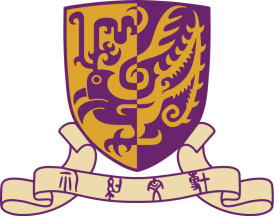Faculty

Urs MAURER
Ph.D., University of Zurich
Associate Professor
Rm 325, Sino Building
umaurer@cuhk.edu.hk
3943 1035
2603 5019
Brief Introduction
Professor Urs Maurer's research focuses on cognitive and neural aspects of spoken and written language processing. He is particularly interested in reading acquisition, dyslexia, and second language learning. One goal of his work is to use neural markers of language processing to inform screening and intervention practices for dyslexia. His research involves behavioral and functional neuroimaging techniques, such as EEG and fMRI.
Research Interests
Teaching Areas
- PSYC2350- Memory and Cognition
- PSYC5140- Cognitive Psychology
Publications
Wang, J., Wu, K. C., Mo, J., Wong, W. L., Siu, T. S. C., McBride, C., Chung, K. K. H., Wong, P. C. M., Maurer, U. (2021). Remediation of a Phonological Representation Deficit in Chinese Dyslexic Children: A Comparison between Metalinguistic Training and Working Memory Training. Developmental Science, 24(3), e13065.
Huo, S., Wu, K. C., Mo, J., Wang, J., Maurer, U. (2021). Children with Chinese Dyslexia Acquiring English Literacy: Interaction between Cognitive Subtypes of Dyslexia and Orthographies. Journal of Learning Difficulties.
Wong, W. L., & Maurer, U. (2021). The Effects of Input and Output Modalities on Language Switching between Chinese and English. Bilingualism: Language and Cognition.
Brem, S., Maurer, U., Kronbichler, M., Schurz, M., Richlan, F., Blau, V., Reithler, J., Van der Mark, S., Schulz, E., Bucher, K., Moll, K., Landerl, K., Martin, E., Goebel, R., Schulte-Körne, G., Blomert, L., Wimmer, H., & Brandeis, D. (2020). Visual word form processing deficits driven by severity of reading impairments in children with developmental dyslexia. Scientific Reports, 10(1), 1-14.
Wang, F., Maurer, U. (2020). Interaction of top-down category-level expectation and bottom-up sensory input in early stages of visual-orthographic processing. Neuropsychologia, 137, 107299.
Maurer, U., Bucher, K., Brem, S., Benz R., Kranz, F., Schulz, E., van der Mark, S., Steinhausen, H.-C., Brandeis, D. (2009). Neurophysiology in preschool improves behavioral prediction of reading ability throughout primary school. Biological Psychiatry, 66, 341-348.
Maurer, U., Brem, S., Bucher, K., Kranz, F., Benz, R., Halder, P., Steinhausen, H.-C., & Brandeis, D. (2007). Impaired tuning of a fast occipito-temporal response to print in dyslexic children learning to read. Brain, 130, 3200-3210.




